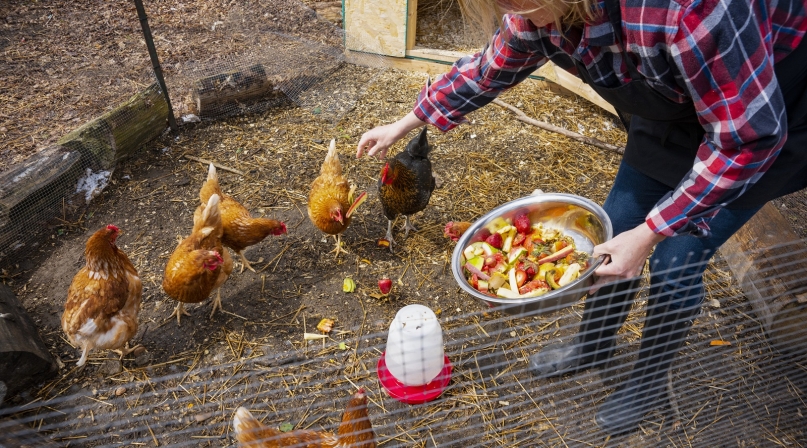Problem:
|
People want to raise chickens in their suburban or urban backyards, but they can sometimes be messy and annoying to neighbors.
|
Solution:
|
Charlotte County came up with an ordinance that everyone can live with — keepers of backyard fowl and their neighbors.
|
Urban poultry raising is increasingly popular, but county officials find that a “not-in-your-backyard” attitude often applies.
It took years for Charlotte County, Fla., to pass an ordinance allowing backyard chickens, said Shaun Cullinan, the county’s planning and zoning and code enforcement official. “I’ve been with the county for about 10 years and every two or three years, it would come up” but be rejected after divisive debate.
It wasn’t until October 2020 that commissioners passed an ordinance allowing the keeping of hens in residential lots. Before, chickens only were allowed in agricultural areas or by residents involved in the 4H club.
“It is a polarizing topic,” Cullinan said. “People move to a residential area and don’t want to have six chickens next door. I see both sides.”
But since the ordinance passed, “it’s working pretty well. There have been some complaints. And some people wanted to expand to other kinds of fowl or increase the number but that has not gained traction.”
Even the definition of poultry can be polarizing. “Some define poultry as livestock, which pretty much rules them out” for urban settings, said Jacqueline Jacob, project extension manager at the University of Kentucky. “Some places regulate them as pets and then have different noise regulations for them. Some have a unique classification.”
Jacob is coauthor, with Ken Anderson, North Carolina State professor and poultry extension specialist, of the book “Developing Regulations for Keeping Urban Chickens.”
There were an estimated 215 million laying hens in backyard flocks before the pandemic, Anderson said. Since the pandemic, “my colleagues have said the number went up 50 percent, up to 320 million. That’s equal to the commercial flock” in the United States.
Having served as a consultant for a number of local governments, Anderson finds that poultry-related ordinances “are really variable.” For example, he said, the limit on the number of hens can range from eight to 100.
There are constants, according to Anderson. “Most ordinances prohibit males; they crow and disturb the neighbors.” Plus, “your chickens have to be on your property. If they are on someone else’s property, then [the property owner] can do whatever they want.”
The Charlotte County ordinance requires residents who want backyard chickens to register and to submit to inspection if necessary. The ordinance requires an entirely enclosed coop in a yard of least 10,000 square feet, with some exceptions for small, subdivided lots. The number of hens allowed depends upon lot size.
Cullinan said the county requires a six-foot opaque fence in the area around the coop — a less common feature in local ordinances — because “we felt we wanted more protection for neighbors.”
In addition, residents who plan to raise backyard chickens must take a course with the state extension service, he said.
“We want to teach people who are new to this. Chickens carry diseases [such as Salmonella]. Wash your hands. Don’t wear shoes from outside in the house. Chickens are wild animals.”
Ken Anderson also warned about the downsides. “If you want to have a backyard flock and you think they’re going to save you money, it will cost you about double what it costs you for a dozen eggs in the store.” Plus, at least in his opinion, “they make lousy pets.”




